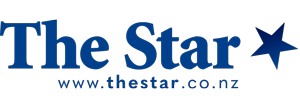
Director Steve Broni said the academy targeted potentially high achieving science pupils from rural, provincial, small, kura and lower decile schools across New Zealand.
This year, almost 70 pupils taking part in the science camps have been able to explore subjects including anatomy and physiology, genetics, chemistry and sport and exercise science.
One of the projects was working with University of Otago sports and exercise projects leader Dr Neil Anderson to analyse the difference between running in footwear and bare feet.

"The cameras are talking to each other, so they know what each camera is looking at."
Motion analysis software was then able to compare running gait with shoes and without shoes to analyse the difference in movement.
Dr Anderson said capturing information such as this had benefits for athletes who were looking to improve performance.

The software had other uses including rehabilitation after injury, Dr Anderson said.
Mr Broni said the academy was a year-long programme and the pupils would return to Dunedin in July to present their science communication projects.
"Between now and then we support them online ."













